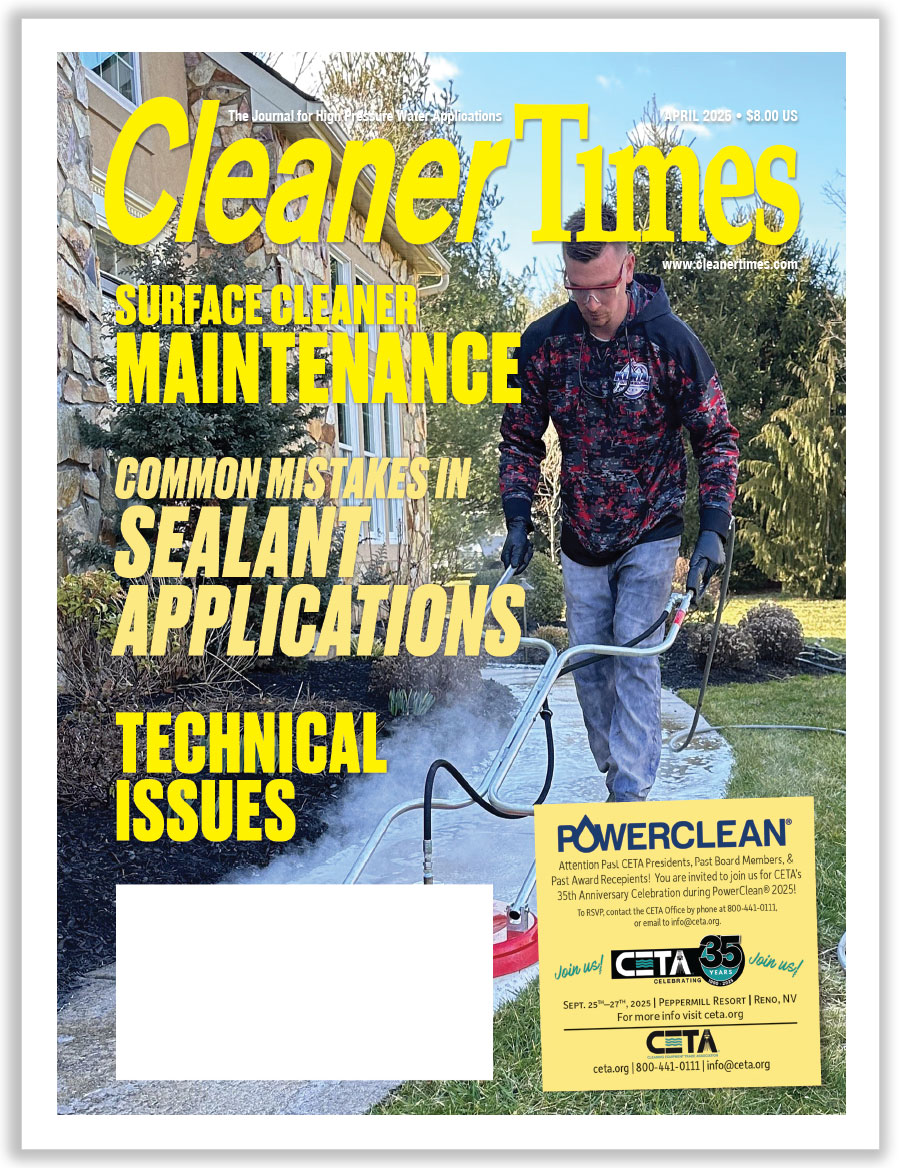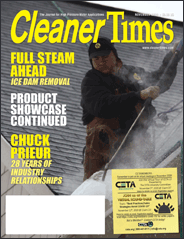
Common Mistakes in Sealant Applications
by Diane M. Calabrese | Published April 2025
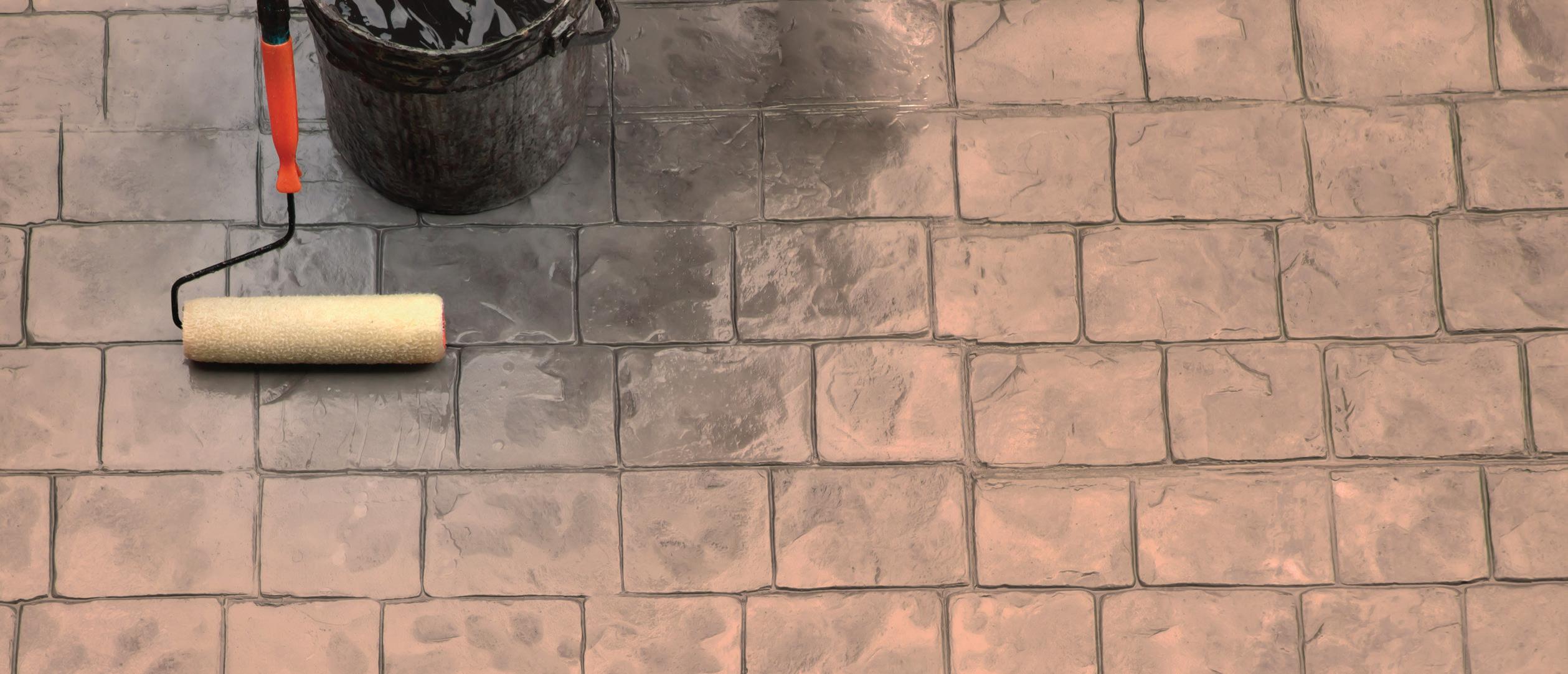
Follow directions. Are these two of the most ignored words in the English language? The surest way to avoid common mistakes in sealant applications is to commit to following directions. Assume nothing.
 Things change so rapidly in contemporary industry that a sealant used only a month earlier may have been modified. For example, concentrated products become more popular—and more concentrated—each day. Read about the current concentration and understand the dilution schedule. Then go from there, but only after assessing the substrate and the expectations of a property owner.
Things change so rapidly in contemporary industry that a sealant used only a month earlier may have been modified. For example, concentrated products become more popular—and more concentrated—each day. Read about the current concentration and understand the dilution schedule. Then go from there, but only after assessing the substrate and the expectations of a property owner.
Is there an upper limit to what a property owner will spend? Is longevity most important even if achieving it costs more?
Consider a wood deck, which is common enough and is sometimes simply spruced up a bit before a home is put on the market for sale. That’s a different outlook than when an owner wants the sealant to extend the life of the deck to the fullest.
“My strongest advice to anyone with a deck is to never use a water-based stain or paint on a wood deck,” says Mike Hilborn, president of RTD Services in Saint Paul, MN. “Only use oil-based stain or paint.”
And the reason for avoiding water-based stains? “Water-based stains cannot be removed with strippers,” explains Hilborn. “They have to be mechanically removed, which means sanded.”
Sanding increases the cost of a project simply because of the time it takes. “Sanding horizontal surfaces is possible but costs three or four times more than traditional strippers or power washing,” explains Hilborn. “Sanding vertical surfaces is next to impossible.”
As a veteran contractor in our industry, Hilborn gives us advice based on his years of experience with substrates and methods. Useful, indeed, because the first rung of any ladder to success with sealants is talking to the industry experts who have been there and done it many times.
Product Vantage
Fellow industry members are just one vital source of information. Manufacturers and distributors of sealant products are also resources. From the product side we get a reminder that the best sealant only attains its promise when applied to a correctly prepared surface.
“A common and easily avoidable mistake in sealant application is improper preparation of the substrate, says Missy Ordiway,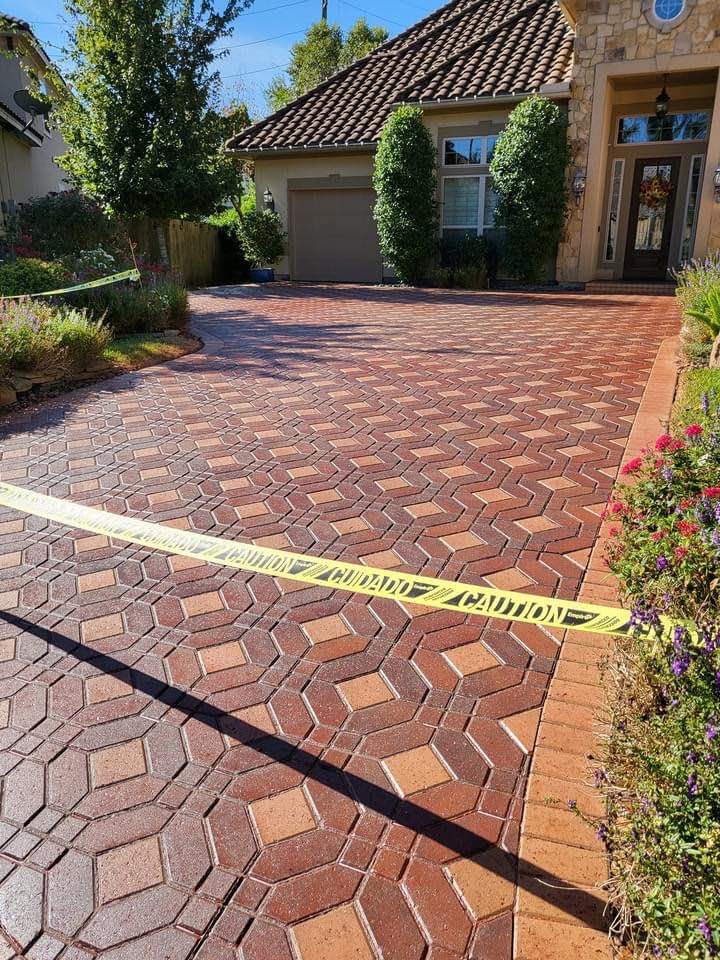 business development manager at Deco Products Inc. in Denver CO. “This includes skipping critical steps like testing for previous sealers and ensuring the surface is thoroughly cleaned.”
business development manager at Deco Products Inc. in Denver CO. “This includes skipping critical steps like testing for previous sealers and ensuring the surface is thoroughly cleaned.”
We must know where we are. Then, we can plan where we are going. The two-step approach is as relevant to sealers as it is to travel.
“If a previous sealer is present and not addressed, the new sealer may fail to adhere properly, leading to costly work, including stripping and resealing,” explains Ordiway. “Inadequate cleaning can leave behind mold, fungus, or contaminants, which can grow beneath the sealer and compromise adhesion.”
A “good enough” approach to cleaning is unlikely to be good enough. “Proper preparation, including thorough cleaning and due diligence in testing the substrate, is essential to ensure a durable and successful sealing job,” says Ordiway.
An excellent outcome when using a sealant can only be had when all the necessary preliminaries are completed. And the ground zero work is knowing the substrate.
Any substrate can be cleaned and prepared so that a sealant fulfills its promise. Adhesion can be compromised on any substrate. The responsibility of the contractor is to make certain that it is not compromised.
What is good advice to contractors? “The best thing to do is to perform a water test on the substrate before accepting the job so you can properly plan for what the job needs, and ensure you are extremely meticulous in your cleaning and preparation work,” says Ordiway.
Whichever product is used, a contractor takes responsibility for using the methodical approach necessary to get an excellent outcome. Slapdash methods undermine sealants.
To get it right, a contractor assesses, reviews options, and makes the best match. And there’s never a shortcut to cleaning.
“The three most common and easily avoidable mistakes we see that lead to sealant failure, specifically in fences, are not mixing materials properly, applying product to wet wood, and not fully saturating the surface with the sealant,” says Roy Branch, the director of wholesale distribution at Wood Defender–Standard Paints Inc. in Mansfield, TX.
“If the stain isn’t thoroughly mixed, its protective properties won’t distribute evenly, leading to inconsistent results,” explains Branch. “Applying stain to wet wood prevents proper absorption, reducing durability. And if the surface isn’t fully saturated, the fence remains vulnerable to moisture, UV damage, and premature deterioration.”
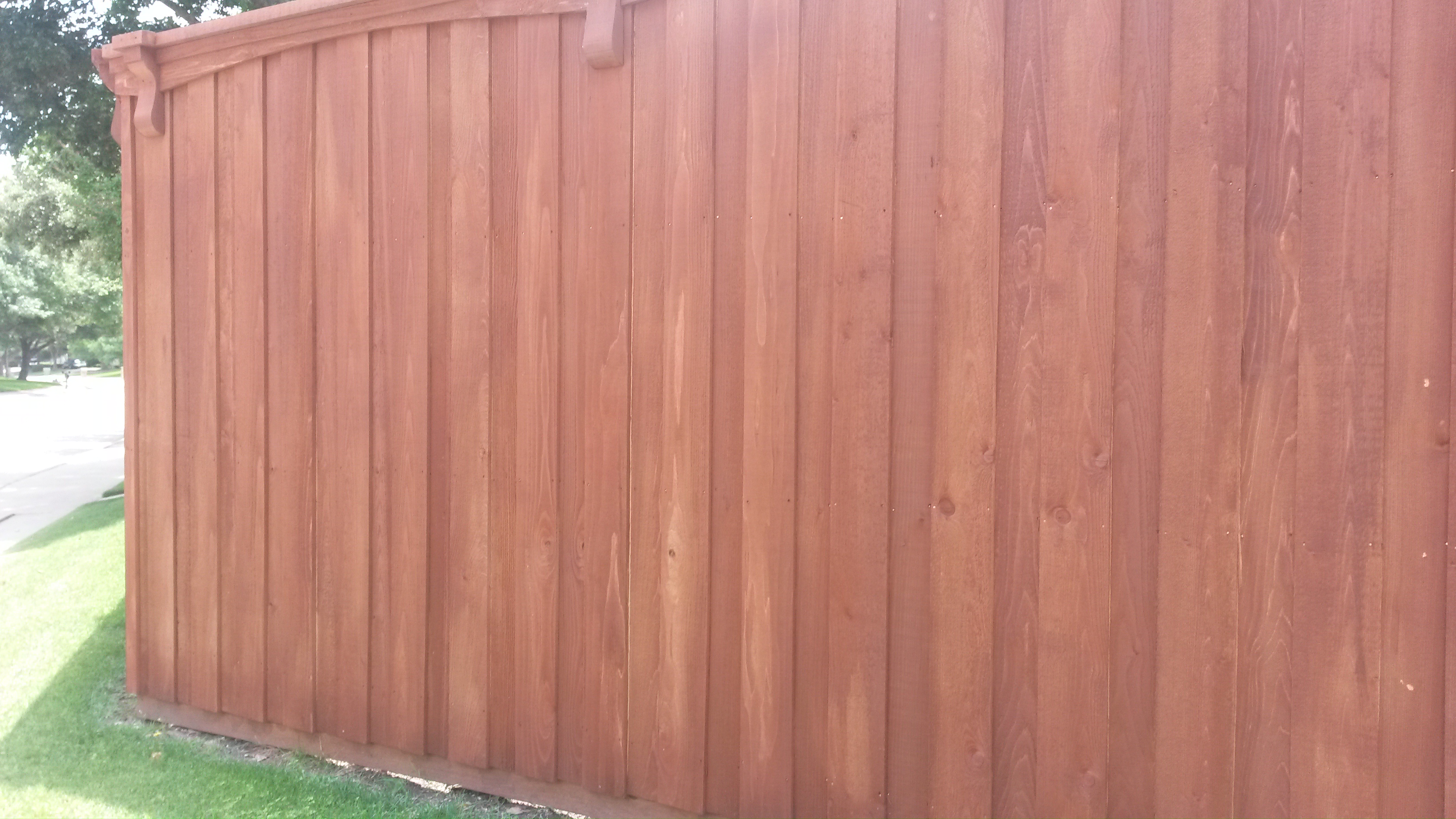
Photos courtesy of Wood Defender – Poor Saturation
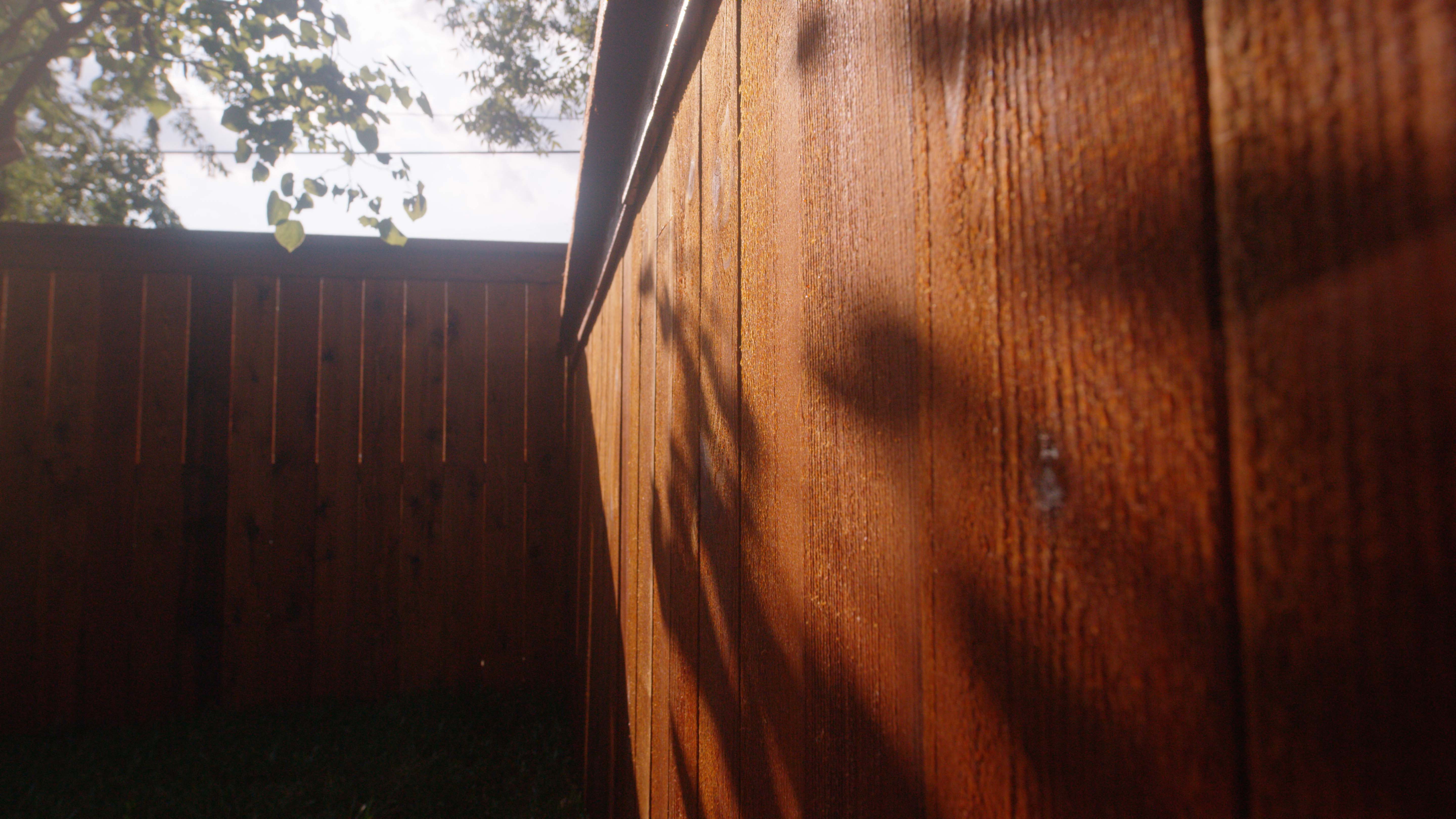
Beautiful Finished Fence
Branch goes on to amplify his comment, telling us that when listing the issues, he is thinking specifically about his company’s premium oil-based exterior wood stain and seal. “Addressing these issues ensures a longer-lasting, more durable finish,” he says.
As to how it works as it does, Branch gives us some background to explain why mixing, application, and saturation are so crucial to optimal outcomes. His company’s exterior stains—and many others—are formulated with oils, pigments, and protective additives, which can all settle over time.
Branch explains that thorough mixing disperses the additives. Without the proper mixing, the result of an application may be uneven color, poor penetration, and lessened protection.
Why is wet wood an issue? Effective absorption of stain depends on dry wood, explains Branch. The stain can penetrate properly, and it achieves a stronger bond and an even finish. An uneven finish may contribute to premature failure or inadequate protection against moisture and UV damage.
Saturation is essential if a sealant is going to protect wood, explains Branch. “If the wood isn’t fully saturated, the wood remains vulnerable to warping, cracking, and premature deterioration.”
Water and More
Sealants reduce penetration of water and associated substances, such as chloride. They don’t stop penetration, but they slow it down.
Keep out the water and establish a reasonable barrier to tagalongs such as insects and fungi. No substrate lasts forever, but with a sealant and reapplication of sealant, it can last a long time.
Making it more difficult for water to move through a substrate can also keep it—and dissolved chemicals—away from metals that corrode. Thus, sealants also help to prevent corrosion of metals associated with structural features.
The term sealant (sometimes sealer) also applies to situations where a barrier is applied to the surface to seal out air (e.g., caulking around windows), seal in heat (caulking again), or even to seal out noise (yes, caulking). Power washing contactors take on a wide range of fee-for-service tasks, including sealing windows and breaches in homes.
Avoidable mistakes are generally the same irrespective of the composition of the substrate. Clean thoroughly. Use the sealant correctly.
Some sealants are more tolerant of contaminants than others. But assume that any sealant demands a strictly clean surface. And get rid of the dirt, debris, grease, etc. all across the surface.
We have not mentioned temperature until now, but a manufacturer will give a threshold temperature below which the sealant should not be applied. It would be a big mistake to apply a sealant when the air temperature is too low or too high. The results will not be good, and the customer will not be happy with the outcome.
Applying caulk may seem a task so mundane that surely most homeowners would not hire someone to do it. That’s not always true.
And just as power washing contractors have added services such as cleaning dryer vents and installing Christmas lights, they can add services beyond cleaning and sealing a deck, to include cleaning and sealing windows. And they can find receptive clients.
A contractor versed in sealants can offer suggestions to residential and commercial clients when cleaning building exteriors, windows, walks, decks, etc. Sealant applications beyond wooden decks make an excellent add-on service.
Applying a sealant (or stain or architectural finish of any sort) to a structurally unsound substrate brings the same result as putting icing on a crumbling cake that cooked incorrectly. The result is a disaster.
True, an iced cake that falls into fragments is still edible, but a structurally unsound deck that is sealed remains unsafe even though it might take on the appearance of a new deck.
It is a mistake to apply a sealant to a faulty structure. If you are called for an estimate on sealing and an unsound structure is discovered, the only prudent course of action is to advise the owner of repairs (or replacement) needed and look for other prospects. (A savvy power washing contractor will be able to make referrals to deck restoration companies, perhaps as an alliance.)
The EPA has purview over every type of architectural coating, including decorative, such as faux-finishing (wet-in-wet techniques), and fire retarding. Be certain, however, to not make the mistake of assuming the sealant being used is sanctioned by regulators at the local level.
Contractors in some parts of the country must adhere to ever-stricter rules about chemical use in local jurisdictions. Know the regulations in effect where a structure is located. Keeping it legal is just one more parameter to add to the project planning process!


